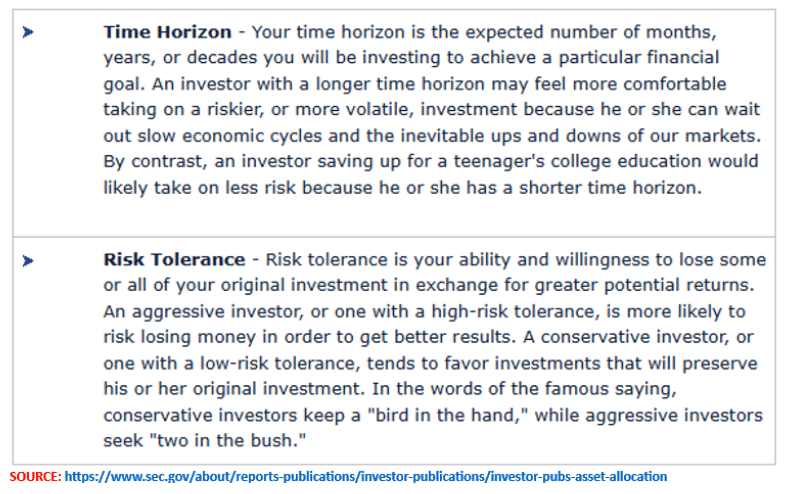Smart Investing: Balancing Crypto with Traditional Assets

In today’s dynamic financial landscape, balancing traditional assets with emerging digital assets like cryptocurrencies is increasingly important. According to a Gallup poll, 61% of Americans own stocks in public companies. A Federal Reserve survey indicated that nearly 24.6 percent of Americans owned cryptocurrencies – a significant surge from the 13% pre-pandemic levels. These statistics highlight a growing trend of diversified portfolios, indicating the need for a balanced approach to investing.
Helping You Build Balanced Investing Portfolios
Online investing platforms are a valuable tool for investors looking to balance their portfolios with both crypto and traditional investments. Given how busy retail investors are today, it’s hard to manage other daily demands on our time, and to also figure out how to build, monitor, and manage a balanced investment portfolio. This is especially true for investors who aren’t experts in the realm of finance and investing.
With services like auto investing, IRAs, and commission-free trades, SoFi’s online stock trading platform simplifies the process of managing diverse assets. This platform offers a user-friendly experience, making it easier to integrate new and traditional investments seamlessly.
Key Tips and Strategies for Building Balanced Portfolios
Balancing traditional and new-age assets can seem daunting, but it doesn’t have to be. In the discussions that follow, we’ll guide you through strategies to achieve a well-rounded investment portfolio. We’ll cover risk management, asset allocation, and market analysis techniques, helping you make informed decisions to reach your long-term financial goals. We’ll also leave you with links to a wealth of additional resources to help you build better-balanced portfolios.
Risk Management
Risk management is a crucial component of investing, especially when incorporating volatile assets like cryptocurrencies into your portfolio. Effective risk management strategies help you mitigate potential losses and protect your investments against market downturns.
DIVERSIFY TO MITIGATE RISK
Diversification is crucial for risk management. By spreading investments across various asset classes, you reduce exposure to any single investment’s poor performance. Traditional assets like stocks and bonds provide stability, while cryptocurrencies offer growth potential. This combination helps balance risk and reward. For example, if you have $100,000 to invest, you might allocate $60,000 to stocks and bonds and $40,000 to cryptocurrencies.
STAY INFORMED AND UPDATED
Keeping abreast of market trends and news is vital. Follow reputable financial news sources and government reports to stay informed about the latest developments in both traditional and crypto markets. This knowledge enables you to make timely adjustments to your portfolio. For instance, monitoring the Federal Reserve’s interest rate decisions can help you anticipate movements in traditional markets, while keeping an eye on regulatory news can inform your crypto investments.
USE STOP-LOSS ORDERS
Stop-loss orders are an effective tool to manage risk. They automatically sell an asset when it reaches a predetermined price, limiting potential losses. This strategy is particularly useful for volatile assets like cryptocurrencies. For example, if you purchase Bitcoin at $40,000, you might set a stop-loss order at $35,000 to minimize losses in case of a market downturn.
HEDGE YOUR BETS
Hedging involves taking positions that offset potential losses in your primary investments. Investors do this by using options, futures, or inverse ETFs. For example, if you have significant investments in tech stocks, you might buy put options on a tech index to protect against a sector downturn. You can also apply this approach to cryptocurrencies through derivatives.
Asset Allocation
Asset allocation involves dividing your investment portfolio among different asset categories, such as stocks, bonds, and cryptocurrencies. The right mix of assets not only results in a balanced portfolio, but also helps you achieve your financial goals while managing risk effectively.
BALANCE BETWEEN STABILITY AND GROWTH
A balanced portfolio typically includes a mix of stocks, bonds, and alternative investments like crypto. Allocate a portion of your portfolio to stable, income-generating assets such as bonds and dividend-paying stocks, and another portion to high-growth potential assets like cryptocurrencies. For instance, a 70/30 split between traditional assets and cryptocurrencies can provide a balance between stability and growth.
REGULARLY REBALANCE YOUR PORTFOLIO
Market fluctuations can alter your asset allocation. Regularly review and rebalance your portfolio to maintain your desired asset mix. This involves selling overperforming assets and buying underperforming ones to restore balance. For example, if your crypto investments grow to constitute 50% of your portfolio, you might sell some to bring it back down to your target allocation of 30%.
CONSIDER YOUR TIME HORIZON AND RISK APPETITE
Your investment horizon should guide your asset allocation. Younger investors can afford to take on more risk with a higher allocation to cryptocurrencies, while those nearing retirement should prioritize stability with traditional assets.
For example, a 25-year-old might allocate 40% to crypto and 60% to traditional assets, while a 60-year-old might opt for 10% crypto and 90% traditional assets.
DIVERSIFY WITHIN ASSET CLASSES
Diversification shouldn’t stop at the asset class level. Within your stock portfolio, diversify across sectors like technology, healthcare, and finance. Similarly, within your crypto holdings, consider investing in a mix of established coins like Bitcoin and Ethereum, as well as emerging altcoins. This reduces the risk of sector-specific downturns impacting your overall portfolio.
Market Analysis Techniques
Market analysis techniques are essential for making informed investment decisions. By understanding market trends and the factors driving asset prices, you can optimize your investment strategy and improve your portfolio’s performance.
FUNDAMENTAL ANALYSIS
Assessing the intrinsic value of an asset is key to making informed investment decisions. For traditional assets, this involves analyzing financial statements, market conditions, and economic indicators. For cryptocurrencies, consider factors like the technology behind the asset, its use cases, and adoption rate. For example, evaluating a company’s P/E ratio and growth prospects can inform your stock investments, while assessing a cryptocurrency’s white paper and developer activity can guide your crypto decisions.
TECHNICAL ANALYSIS
Technical analysis involves studying historical price movements and trading volumes to forecast future price trends. This method is useful for both traditional assets and cryptocurrencies. Utilize charts and technical indicators to identify market patterns and potential entry or exit points. For instance, using moving averages and RSI (Relative Strength Index) can help predict stock price movements, while similar techniques can be applied to crypto markets.
SENTIMENT ANALYSIS
Market sentiment can significantly impact asset prices. Monitor social media, news outlets, and market sentiment indicators to gauge investor mood. This approach is particularly relevant for cryptocurrencies, which can be highly influenced by public perception. For example, analyzing Twitter trends and Reddit discussions can provide insights into the sentiment surrounding a particular cryptocurrency.
QUANTITATIVE ANALYSIS
Quantitative analysis uses mathematical models to evaluate investment opportunities. This includes analyzing financial ratios, performing regression analysis, and using algorithms to predict price movements. For example, calculating the Sharpe ratio of a stock portfolio can help assess risk-adjusted returns, while similar quantitative techniques can be applied to analyze cryptocurrency investments.
Building Smart, Balanced Portfolios
Creating a balanced portfolio that includes both traditional assets and cryptocurrencies is a smart approach to investing in the modern financial landscape. By managing risks, strategically allocating assets, and employing effective market analysis techniques, you can achieve your long-term financial goals. Platforms like SoFi can assist in this journey, providing the tools and services needed to navigate both traditional and digital markets successfully.
As you move forward, continue to educate yourself and stay updated on market trends. Balancing stability with growth potential will help you build a robust and profitable investment portfolio. Embrace the future of investing with confidence and strategic planning.







